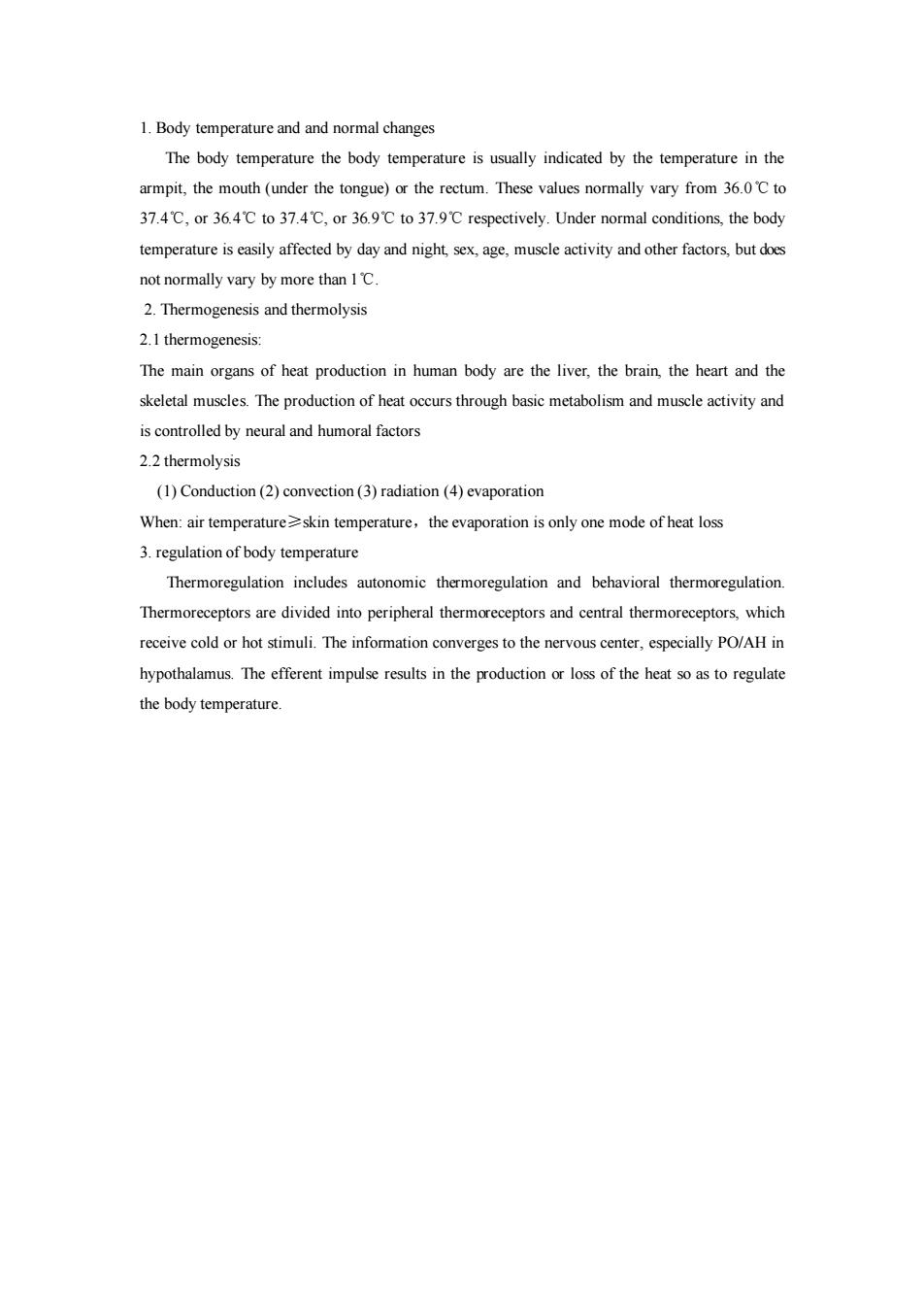正在加载图片...

1.Body temperature andand normal changes The body temperature the body temperature is usually indicated by the temperature in the armpit,the mouth(under the tongue)or the rectum.These values normally vary from 36.0C to 37.4℃,or36.4℃to37.4℃,or36.9℃to37.9℃respectively.Under normal conditions,the body temperature is easily affected by day and night,sex,age,muscle activity and other factors,but does not normally vary by more than IC. 2.Thermogenesis and thermolysis 2.1 thermogenesis: The main organs of heat production in human body are the liver,the brain,the heart and the skeletal muscles.The production of heat occurs through basic metabolism and muscle activity and is controlled by neural and humoral factors 2.2 thermolysis (1)Conduction(2)convection(3)radiation (4)evaporation When:air temperatureskin temperature,the evaporation is only one mode of heat loss 3.regulation of body temperature Thermoregulation includes autonomic thermoregulation and behavioral thermoregulation. Thermoreceptors are divided into peripheral thermoreceptors and central thermoreceptors,which receive cold or hot stimuli.The information converges to the nervous center,especially PO/AH in hypothalamus.The efferent impulse results in the production or loss of the heat so as to regulate the body temperature.1. Body temperature and and normal changes The body temperature the body temperature is usually indicated by the temperature in the armpit, the mouth (under the tongue) or the rectum. These values normally vary from 36.0℃ to 37.4℃, or 36.4℃ to 37.4℃, or 36.9℃ to 37.9℃ respectively. Under normal conditions, the body temperature is easily affected by day and night, sex, age, muscle activity and other factors, but does not normally vary by more than 1℃. 2. Thermogenesis and thermolysis 2.1 thermogenesis: The main organs of heat production in human body are the liver, the brain, the heart and the skeletal muscles. The production of heat occurs through basic metabolism and muscle activity and is controlled by neural and humoral factors 2.2 thermolysis (1) Conduction (2) convection (3) radiation (4) evaporation When: air temperature≥skin temperature,the evaporation is only one mode of heat loss 3. regulation of body temperature Thermoregulation includes autonomic thermoregulation and behavioral thermoregulation. Thermoreceptors are divided into peripheral thermoreceptors and central thermoreceptors, which receive cold or hot stimuli. The information converges to the nervous center, especially PO/AH in hypothalamus. The efferent impulse results in the production or loss of the heat so as to regulate the body temperature